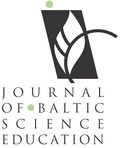STUDENTS’ PERCEPTION OF LEARNING STEM-RELATED SUBJECTS THROUGH SCIENTIST-TEACHER-STUDENT PARTNERSHIP (STSP)
| Title | STUDENTS’ PERCEPTION OF LEARNING STEM-RELATED SUBJECTS THROUGH SCIENTIST-TEACHER-STUDENT PARTNERSHIP (STSP) |
| Publication Type | Journal Article |
| Year of Publication | 2019 |
| Authors | Fadzil, HM, Saat, RM, Awang, K, Adli, DSH |
| Journal | Journal of Baltic Science Education |
| Volume | 18 |
| Issue | 4 |
| Start Page | 537-548 |
| Pagination | Continuous |
| Date Published | August/2019 |
| Type of Article | Original article |
| ISSN | 1648-3898 |
| Other Numbers | E-ISSN 2538-7138 |
| Keywords | authentic science, qualitative methodology, Scientist-teacher-student partnership (STSP), STEM |
| Abstract | Science education is facing an immense challenge due to students’ lack of engagement with science education. This issue calls for a collaborative and integrative teaching strategy such as the Scientist-Teacher-Student Partnership (STSP). This research employed a qualitative research methodology supported by quantitative data, to explore students’ perceptions of learning science through STSP. It involved 125 students in Grade 10 from four schools, eight science teachers and seven scientists from a university situated in Kuala Lumpur. The data were collected through survey questionnaire and interviews. The collected qualitative data were analysed using constant comparative techniques and the quantitative data arising from the responses of the survey were calculated as mean scores and standard deviations. The findings showed that the tripartite collaboration brings educational benefits to all groups. Based on the student’ perspective, four (4) main themes emerged. The students found that 1) the partnership enriched their learning experiences, 2) they acquired procedural skills through hands-on experiments, 3) they had the opportunity to explore emerging topics in science, and 4) they were exposed to various career opportunities in STEM-related fields. This research has promoted greater articulation of STSP as a mechanism for educational reform in STEM. |
| URL | http://oaji.net/articles/2019/987-1564685988.pdf |
| DOI | 10.33225/jbse/19.18.537 |
| Refereed Designation | Refereed |
